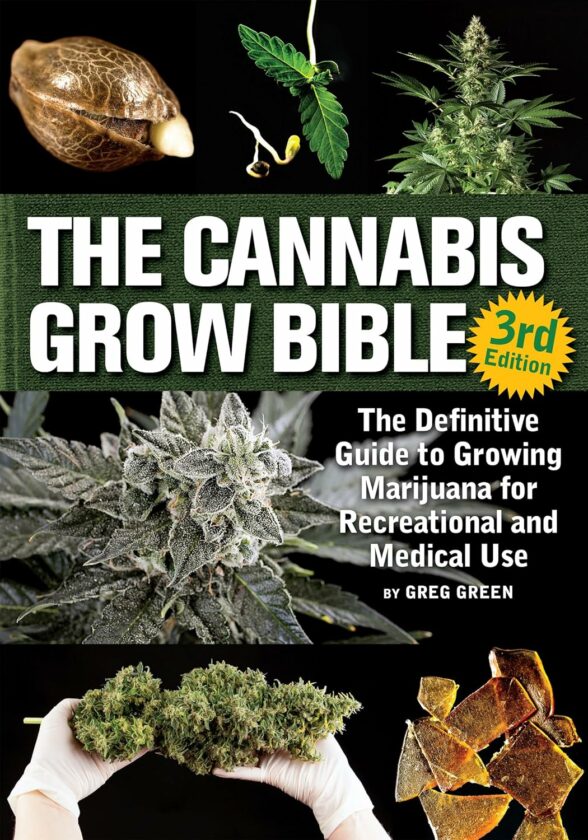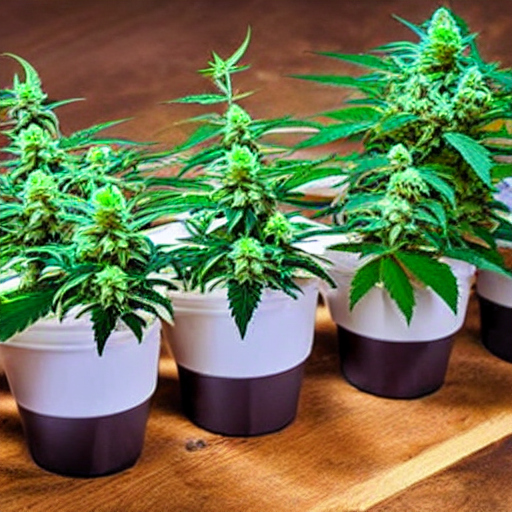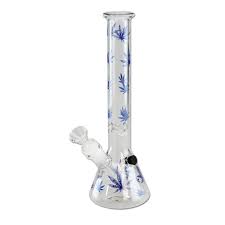
Watch out for these six potential problems and Cure 99% of the issues around growing Cannabis:
Previously, we explained how to identify numerous problems that may arise when growing Cannabis. To be honest, when one grows this plant, it is probable that one will run into one if not many of the potential problems associated with growing. How you choose to respond to these potential problems will signify whether or not you have a high yield or a costly disaster!
Cannabis can be an easy plant to grow, given the appropriate information and solutions. Choosing to respond to issues that may arise with knowledge given here will hopefully make the process an easy and graceful one for you! After all, they do call it a weed, don’t they?!
When you are growing, if you keep your eye out for these six potential problems, you will solve your issues with cannabis providing a stronger yield and larger, stronger buds!
- HEAT has the potential to kill your wonderful plants!
Your area where you grow your plants should be slightly warmer or close to room temperature. 80% F is the highest limit of temperature you should allow your plants to be exposed to.
The strength of your plant will be compromised if it is too hot in the growing environment. It will create a situation in which your plants will need to consume more H20. There is also a chance that your plants will suffer from nutrient burns due to the fact that they are consuming more water, which is where the nutrients reside.
One way to define cannabis plants heat stress is that the leaves that are in close proximity to the error will show a change in color. They may turn from a green to a brownish-yellow. They may also wilt. When the main stem of the plant becomes weak and bends, this can be a sign that your grow room is too hot. When the cannabis plants heat stress is too high then the plants suffer from too much heat for far too long, it can be irreversible. They may not be able to straighten up and may stop growing altogether. You definitely want to avoid this from happening. One very good solution to this problem is to make sure, without a shadow of a doubt, that your grow room has adequate, if not extreme ventilation! Ventilate, ventilate, ventilate!
If you are growing indoors, you will want to get rid of any excess hot air by using a ventilation system and/or an exhaust fan. When you are doing this, you will also want to make sure that the hot air that is being ventilated out of the grow room goes through a filtration process to get rid of the smell of the cannabis plant. You will want to remain incognito and not notify all of your neighbors about your business of growing such a wonderful plant indoors! One suggestion is to purchase a fan that possess’ a built in carbon scrubber, to reduce the hot air in the room.
Another option is to create a situation where air will circulate in the room. An oscillating fan is a very good choice. This may run you about 20 dollars for a fan that can do the job! Outdoors, if you have plants that have been compromised from the heat, it is important to treat them with extra care. If you can provide shade for them this is a good choice. Just remember, they may need weeks to recover from cannabis plants heat stress.
- Light for your plants:
There is a delicate balance of light that the cannabis plant will accept. But is has been said, that most of the time more light is better. Light is what allows the plants to grow strong and healthy. Therefore, if the plants are not growing at a fast pace, it can be narrowed down that the problem could be due to the fact that you do not have enough light. If you want many big, strong, happy buds on your plants, you will want to make sure that you give the plants plenty of light in the flowering cycle of the growth process.
There are many ways to increase the yield of your plants. So to clarify, more light is not the solution every time. The answer is to give them bright light, not necessarily tons of light. The cannabis plant, in its early stage can be very vulnerable. In this stage, they need light, but not too much. In comparison, when the plant begins to flower, they will want to soak up as much light as possible. These plants request light that is bright, but not too bright. As stated before, there is a balance with these plants…
Most often, when there is too much light, the plants can appear burned. This signifies that the lights are too close to the plants. When plants are young, they are still in their seedling stage, and when they are new clones, providing them with excessive light will actually hurt them.
If plants are outside, it is unusual for plants to receive surplus light, but if the young plants are placed in a situation where there is too much light, they can suffer from light stress.
If your grow lights are too close in proximity, they may also dehydrate a plant, and the leaves of the plant may appear to turn a brown color, thus showing you they are burned. HPS, or High Pressure Sodium lights have been know to stress the plants with too much light. The LED grow lights, or Light Emitting Diodes as well as the CFL or Compact Florescent Lights can also create a “too much light” kind of situation, if you are not careful.
What are the tell tale signs that there is excessive light on your plants?
If the leaves that are in close proximity to the lights are showing a change, you can assess that they are receiving too much light. Light stress, also called light burn is something that can be solved, if you keep a concerted effort to watch your plants and make sure they don’t burn.
There is a test you can perform to see if the lights you are using are too hot. For the Metal Halide, CFL, T5 or HPS lighting systems, one can try the “back of the hand” test. Once the lights have been set up and have had a chance to be at there normal temperature, put your palm on top of, but not touching the tallest part of the plant. Allow 10-30 seconds to pass. If your hand becomes too warm, then you will know the heat is too much for your plants.
LED lights are most effective if they are placed 10 inches away from your cannabis. That is if they are 90 watts. If they possess 300w or 500w then you will want to make sure they are at least 2 – 3 feet away from the cannabis.
It is best to start with lights that are well known and trusted. It is a good idea to place the lights farther away and then when you notice the plant is doing fine, you can place them closer.
So to reiterate….If you see signs of browning or even buds becoming a white-ish color you will want to adjust the lights.
One good suggestion: Be cautious when moving lights. Do not move them more than an inch in a day, so you can monitor the change occurring for the plant.
- Pests and Mold
Hydroponic growing is the best suggestion for a beginner. At easy420grow.com we think that the medium that can be monitored is an easier way to keep pests from endangering your plants.
Coco Coir is a very good suggestion. It is soil-less and eliminates the bug issue. Or most importantly, greatly reduces the chances of infestation. Gnats, spider-mites, caterpillars, white flies, aphids are some of the nasty pests that can harm your plants. They may fester on the plants themselves, instead of being found in the soil. They can also show their ugly heads in your soil! Another annoying situation is when you find mold on your plants. Not only can it spread between plants, but it has been known to spread inside a home, between rooms.
If you are using the soil-less option and growing hydroponically, you will need to not treat the “soil”, but you will need to address the environment in which the plants are growing, and the plants themselves.
Do not hesitate if you find any of these pests or mold! SM-90 is a miracle cure with a nice smell. It is not harmful to animals or humans so can be used at anytime in the process of growing cannabis.
You can mix 1 part SM-90 to 5 parts H20. Turn off lights, and mist the leaves of your cannabis plants. This substance kills most pests on contact, and will protect your plants in the future. Wipe away the unwanted and apply once more for really strong protection!
You may also choose to use an oscillating fan, at this point, to create a healthy air flow in the room and on the plants themselves. This will reduce a chance that any additional mold that may grow.
- Keep an eye on the Humidity Levels:
Young plants require high humidity. When plants are flowering /budding, low humidity is best to assure that mold will not grow. Humidity refers to the amount of water vapor that exists in the air at any given time.
One option to measure the amount of water vapor in the atmosphere is to use a humidity monitor. You will also want to incorporate the use of a dehumidifier/humidifier to assess the amount of water vapor in your grow room. The common problems inexperienced, beginning growers find is due to the fact that they may not be addressing the humidity in the grow room.
Cannabis, in its young stage, benefits from having humidity at a 40% – 70% level. When the humidity is absent, the cannabis plant will develop “fake” symptoms of nutrient deficiencies. When the plant is in its budding/flowering stage, the ideal level of humidity is a 45%. This level prevents unwanted mold from growing.
If the humidity is excessive, there will be additional water that can be absorbed through the leaves that can allow for mold to grow. The interior of the buds can grow this unwanted mold, but a person will not necessarily see this if just looking at the exterior of the bud. Just make sure you are keeping an eye on the humidity of the grow room and you should be fine.
Keep the humidity at the range that will allow the plants to grow without encouraging any unwanted problems, i.e. mold etc.
This simple action sets the experts apart from the beginning growers. So, just in case you don’t know, a humidifier introduces moisture into the room, while a dehumidifier sucks out the moisture.
You can find inexpensive humidity gauges for your grow room at many department stores, or home appliance stores, and hardware stores.
When the plants are in their vegetative stage, you will want to have the room possess a humidity of 60%, and when the flowering stage begins, you will want to lessen the humidity to a 45%.When the flowering buds begin to ripen and become bigger, you will want to lower the humidity in the grow room, if at all possible.
To keep the flowering buds from molding as they reach ripe maturity, you can use a dehumidifier. This process of mold prevention is done 2-3 weeks before you harvest your product. There is a perk to lowering the humidity at this stage. This will result in a higher number of trichomes on the plants. This will make the buds stronger in their potency and full of beautiful crystals at the same time. If you choose to use the right equipment, your grow room can be close to fully automated.
- Preserving Healthy Root Systems
For the cannabis plant, the root system does the same work that the hearts of our human bodies perform. The roots are “heart” of the plant. So you can understand why when the roots of the plant become unhealthy, so will the whole plant.
Good thing it is easy to solve these problems. This may sound funny, but one of the solutions is to smell the roots of the plant!!! If you can access the bottom of the plant, this is where you will want to smell the roots. Where the unneeded water comes out, if there is a not so pleasant smell, you will have an idea that your plant could be experiencing “root rot”… as it is so commonly called.
Here is a good plan of action, if you think you are experiencing root problems:
- You will want to mix Hydrogen Peroxide at 3% strength with one gallon of water. Or if you purchase Hydrogen Peroxide at 35% strength you will want to mix one tablespoon with one gallon of water.
- When you water the cannabis with this solution, it will destroy any bacteria that may be flourishing in the roots of your plants. But conversely, this solution may also destroy the beneficial bacteria living and protecting your cannabis.
Another viable solution is to add Aquashield to your feeding process. This solution encourages the beneficial bacteria and increases healthy growth in your cannabis. This beneficial bacterium increases the immunity of the plants for those periods of time when the temperature can’t be controlled. There are a few products that promote healthy bacteria growth. Great White and Subculture B additives are good choices, but the best product in our experience has been the Aquashield. It is inexpensive and works wonders.
If you try these listed solutions and continue to experience issues with “root rot” after applying these solutions, your plants may be nutrient deficient. If the PH is off at the root of the plant, it will not be able to absorb the nutrients efficiently. Your plants need the appropriate nutrients and balanced PH to flourish. Does the food you are feeding your cannabis possess the beneficial nutrients and minerals to maximize the health of the plant?
If you are growing hydroponically, you will want to feed your plants General Hydroponics Flora Trio. If you are growing in soil, you will want to choose Fox Farm Trio.
Are you uncertain about what the plant needs nutrient wise? You can learn what you need to know about nutrients for marijuana here.
When you have established the appropriate nutrient requirements of the cannabis, and the pH is at the ultimate level for productive growth, this is when you would want to include the Hydrogen Peroxide solution or Aquashield solution. If you need additional information about appropriate pH levels, check out the pH for marijuana. At this point, feed your plants again. This will provide your plants will the nutrients they may be lacking and flush unneeded salts that may have accumulated in your plants.
Flushing your plants, providing the nutrients they need and achieving the ideal pH will eliminate any existing nutrient deficiencies, thus resulting in healthy cannabis!
With the information provided above, you have the tools to grow productive, high yealding cannabis.




growing marijuana
Did you know that excessive heat can become a hindrance while growing marijuana whether at home or anywhere? The right balance of heat is absolutely necessary to ensure that you get healthy plants growing. More heat can cause nutrient burns in the plan…
[…] anywhere. After the legalization of cannabis farming, more and more people are attracted towards growing cannabis at home. This definitely requires some knowledge about the cannabis but the results are assuredly […]